|
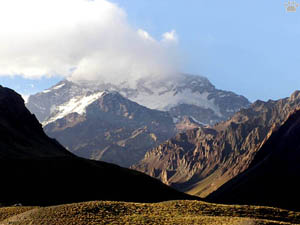
Cerro Aconcagua (6960 m), Argentina.
The Andes Part 4: The Argentinian Andes
|
The Andes of Argentina are not as spectacular and diverse as the mountains
of Chile and Peru, but there are many beautiful places worth visiting.
|
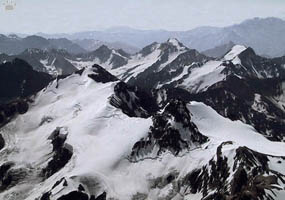 |
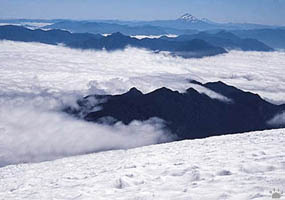 |
| Views from the summit of Cerro Aconcagua. |
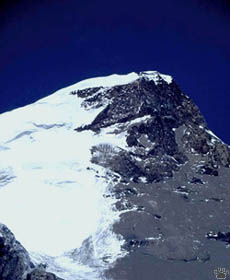
Summit of Cerro Aconcagua. |
Cerro Aconcagua is the highest peak outside Asia.
It is relatively easy to climb: you can hike to the summit and back in three days
or less if you tolerate altitude well. Most people need a few more days for acclimatization. |
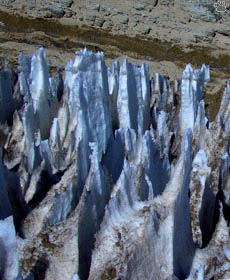
Ice formations on the slopes of Cerro Aconcagua. |
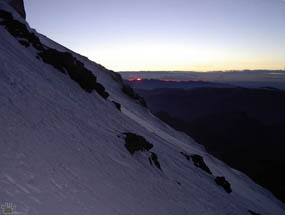 |
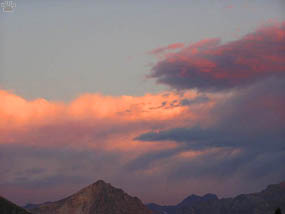 |
| Sunrise views from the slopes of
Cerro Aconcagua. |
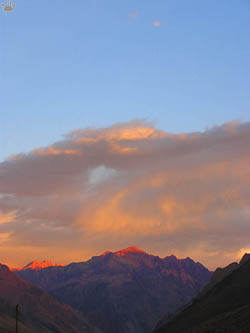
Sunset near Cerro Aconcagua. |
That doesn't mean the trek should be taken easily:
the peak has killed its share of climbers. Don't try to climb it in one day wearing
sandals and a t-shirt, like I did. |
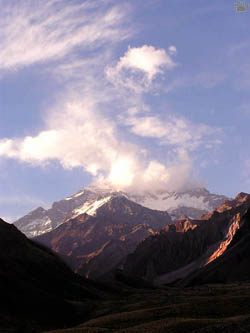
Cerro Aconcagua. |
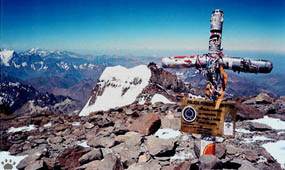
Summit of Cerro Aconcagua. |
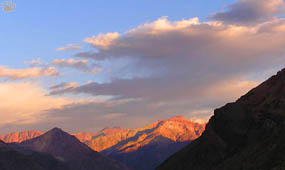
Sunset near Cerro Aconcagua. |
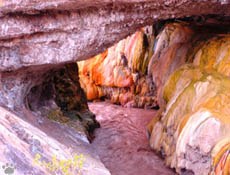
Puente del Inca - a unique travertine formation in
Aconcagua area. |
Another beautiful place is Parque Nacional Los Cardones
near Salta, famous for its forests of giant cacti, and for puna wildflower blooms
in summer. |

Summer is the rainy season in Los Cardones,
especially along the eastern border of the park. |
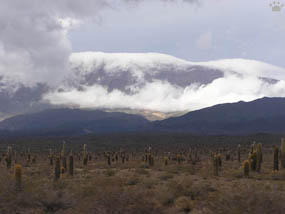 |
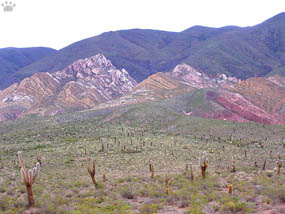 |
| Los Cardones National Park. |
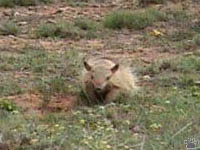
Hairy armadillo (Chaetophractus nationi),
PN Los Cardones. |
Wildlife of Los Cardones and other puna areas includes guanacos,
condors, rheas, tinamous, pumas, and an impressive variety of small birds and
rodents. Seeing it requires patience and a lot of hiking around. |
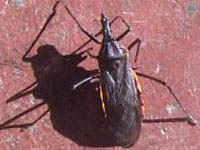
Kissing bug (Rhodnius), vector of
Chagas' disease, PN Los Cardones. |
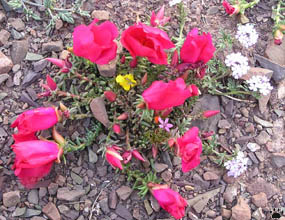 |
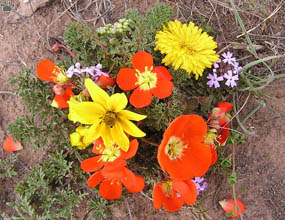 |
| Puna flowers, Los Cardones National
Park. |
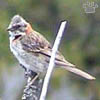
Andean sparrow,
PN Los Cardones. |
The most widespread bird of the Andes is Andean sparrow (Zonotrichia
capensis). This member of bunting family occurs in cities, towns, and pretty
much everywhere else in highlands from southern Mexico to Tierra del Fuego. In
Chile and Argentina, it lives all the way down to sea level. On the Altiplano,
it can be seen at altitudes of up to 5,000 m.. |
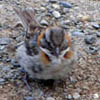
Andean sparrow,
PN Los Cardones. |
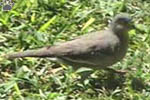 |
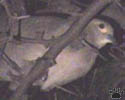
|
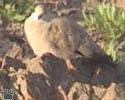 |
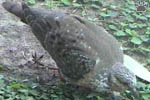 |
| Doves of the Argentinian Andes, left
to right: picui dove (Columbina picui), Moreno's ground-dove (Metriopelia
morenoi), eared dove (Zenaida auriculata), immature eared dove. |
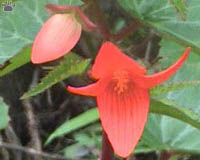
Flowers, Parque Nacional Calilegua. |
As you move north along the Argentinian side of the Andes,
the landscape rapidly changes from very dry to very wet. Eventually, you get into
yungas - the lush cloud forests of Northern Argentina and Bolivia. |
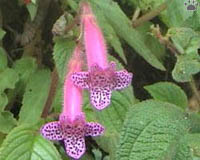
Flowers, Parque Nacional Calilegua. |
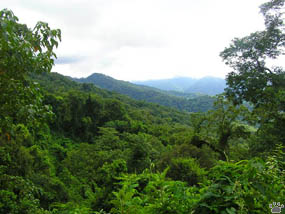 |
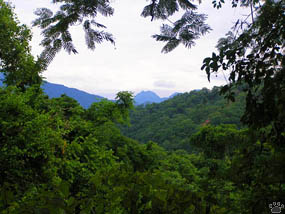 |
| Cloud forests of PN Calilegua. |
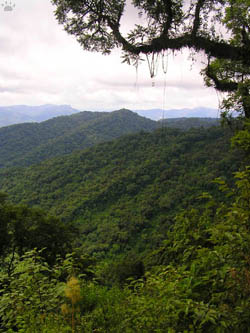
Sunset near Cerro Aconcagua. |
Calilegua Nat'l Park is the largest in the yungas
of Argentina, and the most biologically diverse in the country. It is also a great
place for hiking, with lots of nice trails. |
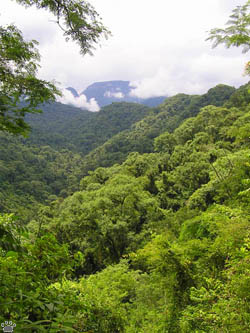
Cerro Aconcagua. |
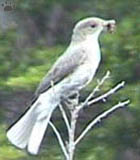 |
Birds of Calilegua, upper row, left
to right: plush-crested jay (Cyanocorax chrysops, 2 photos), rufous-bellied
thrush (Turdus rufiventris), picazuro pigeon (Columba picazuro);
bottom row: slaty elaenia (E. strepera, larger photos), white-troated antpitta
(Grallaria albigula , central photo), gold-olive woodpecker (Piculus
rubiginosus). |
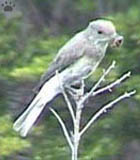 |
 |
 |
 |

Yungas squirrel (Sciurus ignitus), Calilegua. |
A road crosses the park from the headquarters at the lower
edge to the puna edge at 2,000 m. It is just 25 km long, has very little traffic,
and can be walked in less than a day. You can see more than 100 species of birds
on such a hike, plus a lot of other interesting wildlife. |
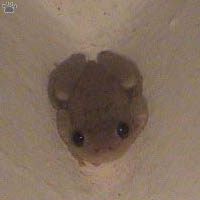
Eleutherodactylus tree frog, Calilegua. |
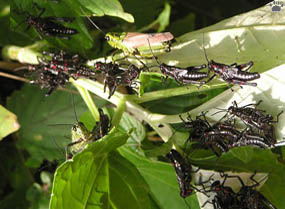 |
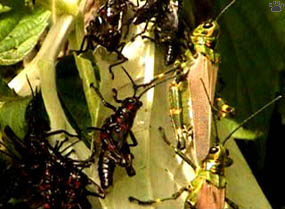 |
| Cloud forests of PN Calilegua. |
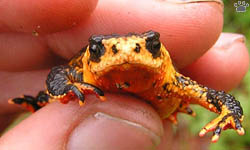
Golden toad (Atelopus), Calilegua. |
The further north you go, the better it gets - all the way
to Peru (see part 1). |
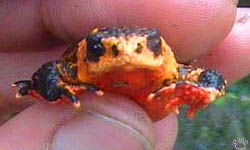
Golden toad (Atelopus), Calilegua. |

Morning in Parque Nacional Calilegua, Argentina. |
Part 5. Salar de Uyuni
Back to Part 3
Home
|